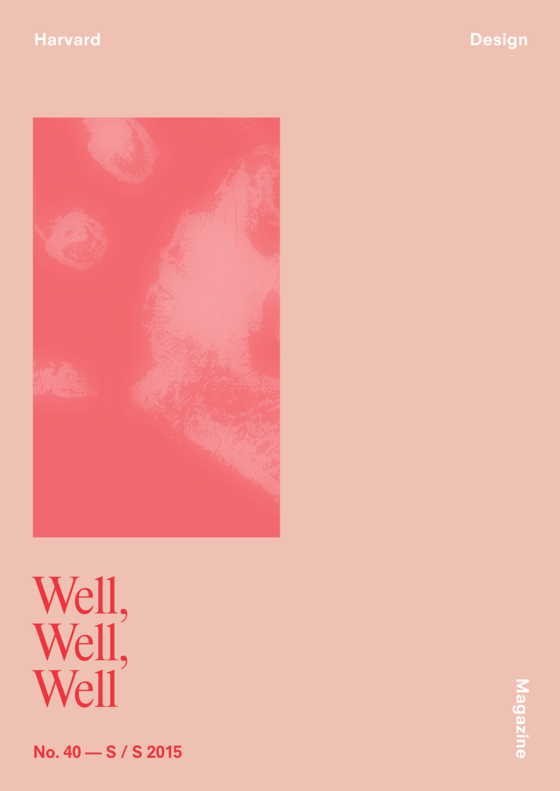Checkup
40: Well, Well, Well
Out of stock

Health, and the information around it, is messy. As are our bodies and the systems intended to help sustain them. No anatomical chart, in its immaculate precision, can articulate the ooze of our fluids and secretions, or our sensations of pain and fear; or the strain of accumulating medical bills; or the clash between the cult of wellness and rampant addiction; or the inequality of access to basic hygiene, nutrition, and medical care. Like health itself, our power—as individuals, citizens, and designers—to heal or to harm ourselves and the spaces in which we dwell is full of contradictions.
These contradictions are what generated this issue of Harvard Design Magazine. “Well, Well, Well” explores some of the tensions and transformations of the landscape of health and illness. As both designers and inhabitants, we create this landscape, and in turn, must navigate our own well-being within it. And as the rules of wellness continue to change—along with political events, science and technology, and nature itself—design and planning must adapt and respond accordingly. Architecture’s panaceas are not without expiration dates, and might even turn out to do more harm than good—but ultimately design has the power to promote and support health and healing in preemptive and progressive ways.
Jennifer Sigler
Ai-Jen Poo
María Magdalena Campos-Pons
Claire L. Evans
Charles E. Rosenberg
Nancy Etcoff
Sean O'Toole
Annmarie Adams
Leslie Topp
Michael Murphy
Salmaan Craig
Thomas A. P. Van Leeuwen
David Theodore
Andreas Georgoulias, Hanif Kara, Leire Asensio Villoria
I. Glenn Cohen
Beatriz Colomina
George Church, Matthew Allen
Aaron Betsky, Barrett Brown-Fried
Germán del Sol, Silvia Benedito
Interboro Partners in Conversation with Linda Fried
Interboro Partners, Tim Davis
Hilary Sample
David Edwards
Nicholas Fox Weber
Matthew Allen
Jeanne Gang
Ann Forsyth
Jenna Sutela
Jose Ahedo
Peter Rose
David Gissen
Susan Merriam
Jörg Scheller
Hui Wang, Julia Kane Africa, Yuko Tsunetsugu
RAAAF
Peter Sealy
Deane Simpson
MASS Design Group
Barbara Lamprecht, Raymond Neutra
Tuomas Toivonen